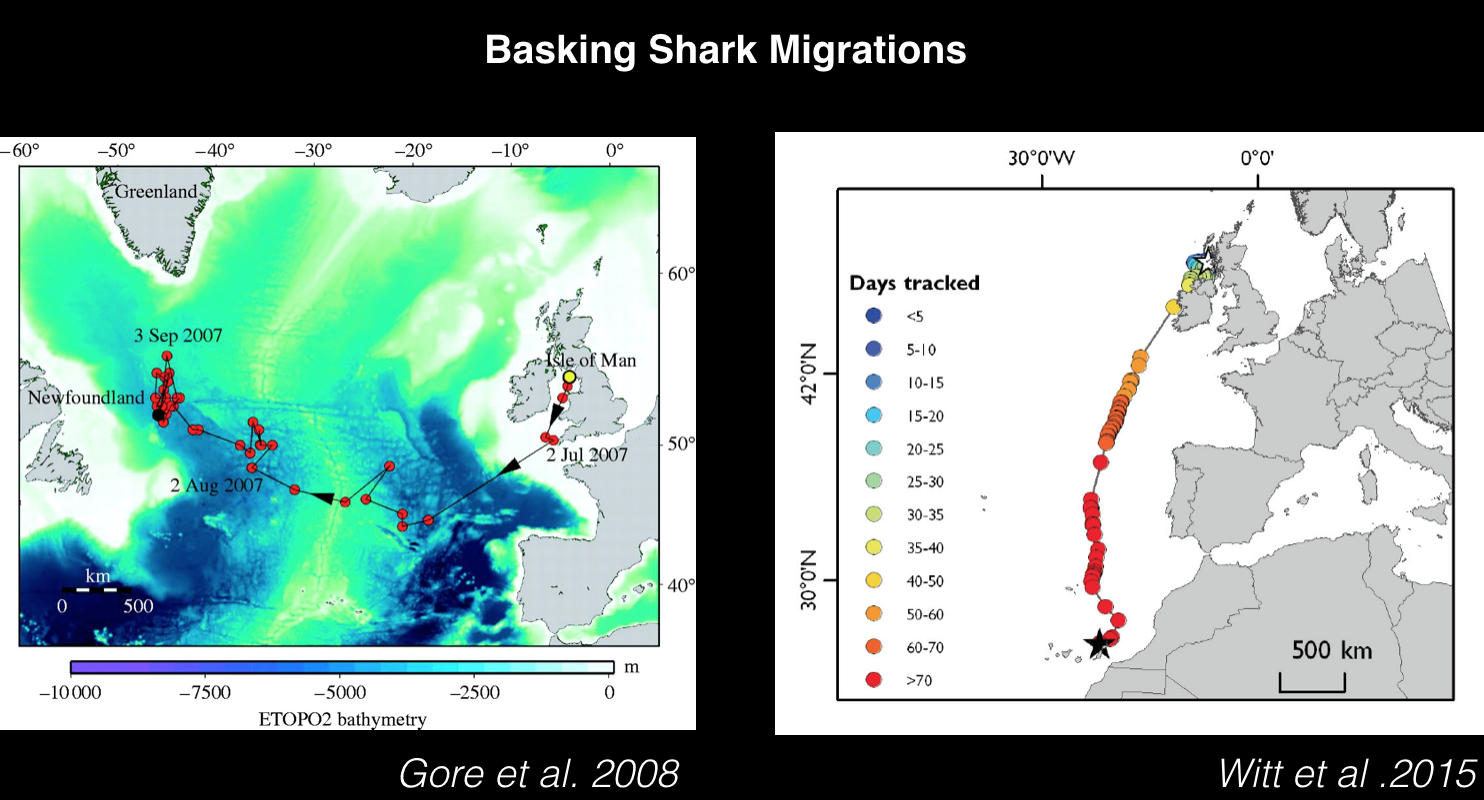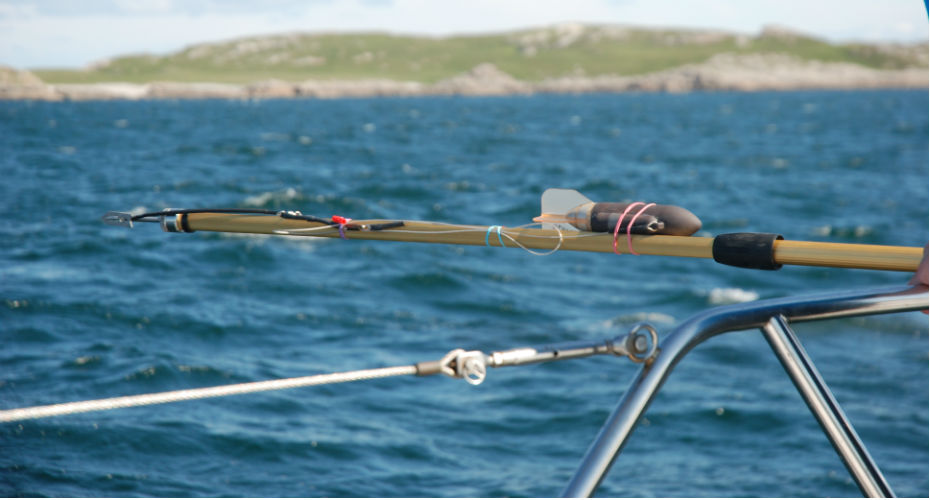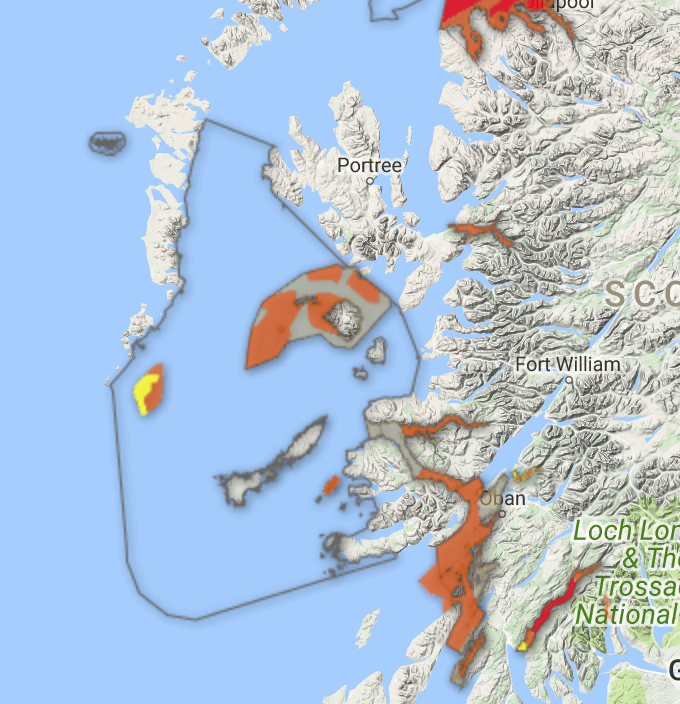
Where do basking sharks go in the winter?
Oct 04 2022

This is a very common question we are asked on tours, scientific voyages, and online. Until relatively recently (say a decade ago) it was very misunderstood. Go back a little further the opinion was that the sharks went to deep water, shed their gill rakers, and hibernated! After October the number of reported shark sightings drop off, and it seems they are not present on the surface. This also ties in with the abundance of zooplankton falling and the changes happening in our seasonal seas. However, the exact whereabouts of the sharks remained a mystery until technology developed.
Satellite tagging was pioneered in the late 1970s and 1980s through Aberdeen university. Comparing the tag size from the prototypes to modern ones is crazy. The original one was 1.25m long! The tag sizes these days are very small in comparison and the welfare of the animal is much better considered. There is, of course, debate over the ethics of invasive studies. However, the contribution to the scientific understanding of basking sharks, in our opinion, is worth it. We now have a far greater understanding of the sharks and an MPA (marine protected area) in Scotland for them.
Save our Seas researchers, Mauvis Gore & Rupert Ormond, had deployed several tags over the years. Laterally Exeter University had been engaged by Scottish Natural Heritage (SNH) to provide a better understanding of the basking shark’s movement and establish an evidence base to be used in recommending protected areas for them. A lot of this was motivated by the large number of basking sharks sighted during an offshore wind farm environmental impact assessment survey in 2012. This is where 918 were sighted in one day near Skerryvore lighthouse.
Tagging projects over the years provided lots of data and contributed to many scientific papers. Here are a couple of extracts that show some of the migrations of the sharks. A general theme is that the sharks head south towards the subtropics, Bay of Biscay, Azores, and Canaries before heading back towards northern waters in the spring. It has been shown they do dive to deeper depths at certain times in this migration. Some have been observed to cross the Atlantic to Canadian shores, such as Mauvis’s tag shown below. Tagging on the east coast of the US shows a possible similar migration south. However, there are also winter shark reports from around the Scottish coast. Including a diver who inadvertently bumped into one in bad visibility at the head of a sea loch near Fort William. So it is likely that some also stay closer to home!
Why do basking sharks migrate?
The reason for the migration isn’t obvious, they do have a large liver that acts as an energy store and will sustain them for a long period. However, do they feed during these winter months at depth? Is there a specific plankton stage that they are targeting? Is there a specific reproductive behaviour happening? Only time and studies will reveal more about their migration. As a migratory species, their life cycle is equally as important at all stages. Just because we have an MPA here in Scotland, doesn’t mean they have adequate protection over important areas on their complete migration path. Learning more about their migration would enable us to further protect basking sharks in the future.





